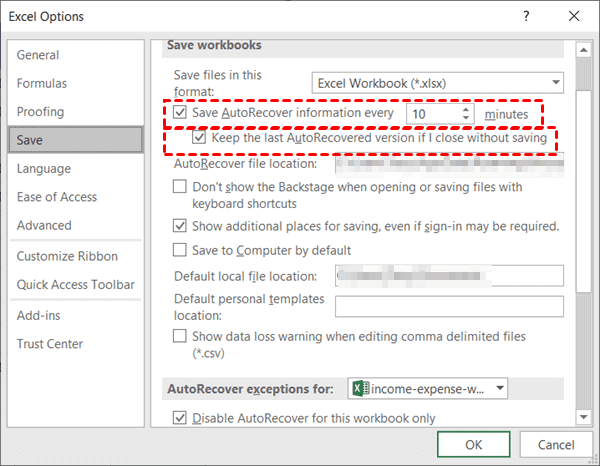Undo Deleted Excel Sheet: Easy Recovery Guide

Introduction to Recovering Deleted Excel Sheets:
Have you accidentally deleted an Excel sheet that contained critical data? Don't fret; you're not the first, and there's a way to bring it back! In this detailed guide, we'll explore various methods to recover your lost Excel sheets with ease and efficiency. Whether you're using Microsoft Excel on a Windows PC or a Mac, the steps are straightforward, and with a little patience, you can restore your data. Let's dive into the recovery process.
Understanding Excel Sheet Recovery

Before we delve into the actual recovery steps, let's understand how Excel sheet recovery works:
- Automatic Recovery: Excel has an in-built feature called AutoRecover which periodically saves your work. This can be a lifesaver in case of unexpected crashes or power outages.
- Backup Recovery: If you've enabled the option, Excel might have created backup copies of your work.
- File History/Time Machine: For Windows, File History, and for Mac, Time Machine can help retrieve lost files.
Steps for Recovering Deleted Excel Sheets

Check the Excel AutoRecover Feature

- Open Excel on your computer.
- Go to File > Open.
- Look for the “Recent” section, where you might find the deleted file listed under “Recover Unsaved Workbooks.”
- If it’s there, select the file and click “Open”.
💡 Note: Make sure AutoRecover is enabled in Excel Options for this to work automatically in the future.

Recycling Bin/Trash

Sometimes, when you delete a file, it ends up in the Recycle Bin on Windows or the Trash on Mac:
- Open the Recycle Bin (Windows) or Trash (Mac).
- Look for your Excel file.
- If found, right-click and select “Restore” to return the file to its original location.
Using File History on Windows

If you’ve turned on File History:
- Right-click the folder where the Excel file was stored.
- Select “Restore previous versions.”
- Browse through the list to find the version with your Excel file and restore it.
Recovering via Time Machine on Mac

Mac users can use Time Machine:
- Open the folder where the file resided.
- Go to Finder, click “Enter Time Machine.”
- Select a previous version with your Excel file and click “Restore.”
| Feature | Windows | Mac |
|---|---|---|
| File History / Time Machine | Yes | Yes |
| AutoRecover | Excel Feature | Excel Feature |

Recovery Software

If all else fails, recovery software can be your ally:
- Download reputable recovery software like Recuva, EaseUS Data Recovery Wizard, or Disk Drill.
- Install and run the software.
- Select the drive where your Excel file was located and scan for deleted files.
- Preview the recoverable files, select your Excel sheet, and recover it to a safe location.
Prevent Future Data Loss

Having a strategy in place to avoid accidental data loss is just as important as knowing how to recover data:
- Enable AutoRecover: Ensure this feature is enabled with regular intervals to save your work automatically.
- Create Backup Copies: Use Excel’s built-in option to create backup copies or use cloud storage like OneDrive or Google Drive.
- Save Work Often: Regularly save your work manually.
- Backup Your System: Use File History or Time Machine to back up your entire system, including documents.
🔐 Note: Always save your work to cloud services or external drives to minimize the risk of data loss.
In wrapping up our guide on Excel sheet recovery, it's clear that there are multiple avenues to retrieve your lost data. From using Excel's own AutoRecover feature, checking the Recycle Bin/Trash, to leveraging system backup features and recovery software, you're equipped to handle such situations. Remember, prevention is key; setting up regular backups and utilizing cloud storage can save you from future distress. Keep these recovery steps in mind, and you'll be better prepared for any unexpected file deletions.
What should I do if I can’t find the file in the Recycle Bin?

+
If you’ve already checked the Recycle Bin or Trash and didn’t find the file, try using File History on Windows or Time Machine on Mac. If these also fail, recovery software might be your next step.
How often should I enable Excel’s AutoRecover feature to save my work?

+
You can set AutoRecover to save every 10 minutes, but for critical work, setting it to save every 5 or even 3 minutes might be beneficial.
Can I recover an Excel file if I’ve overwritten it with a new one?

+
Overwritten files are more challenging to recover. However, if you’ve enabled File History or Time Machine, you might find an older version of the file before it was overwritten.